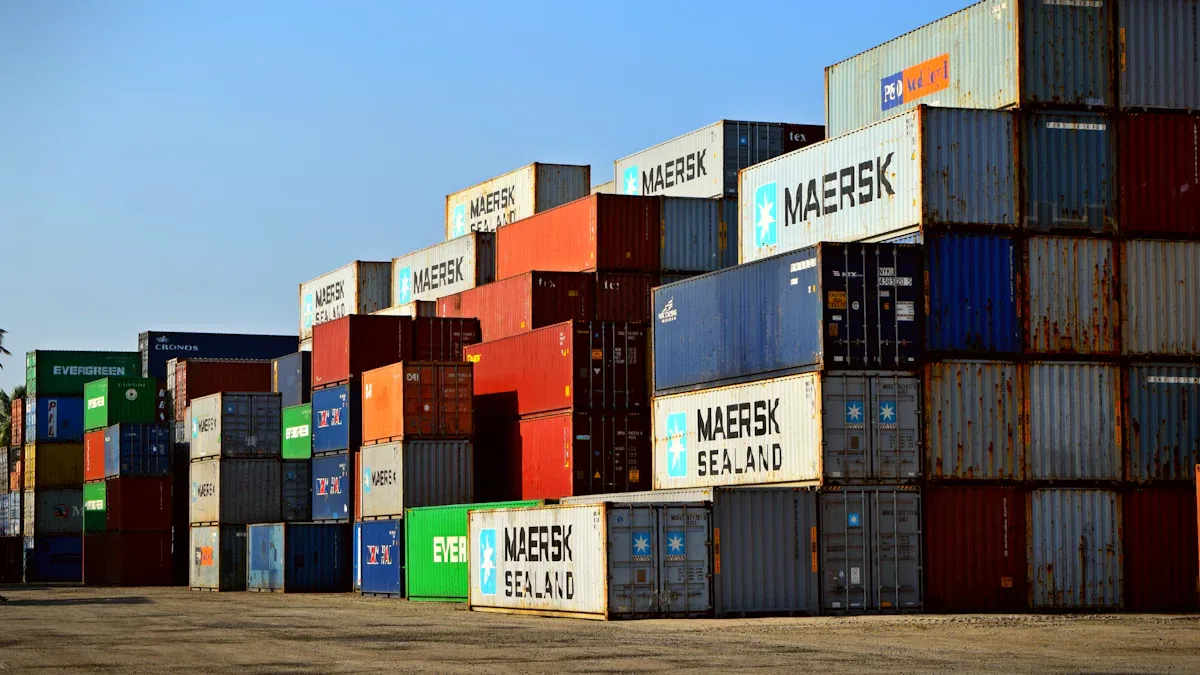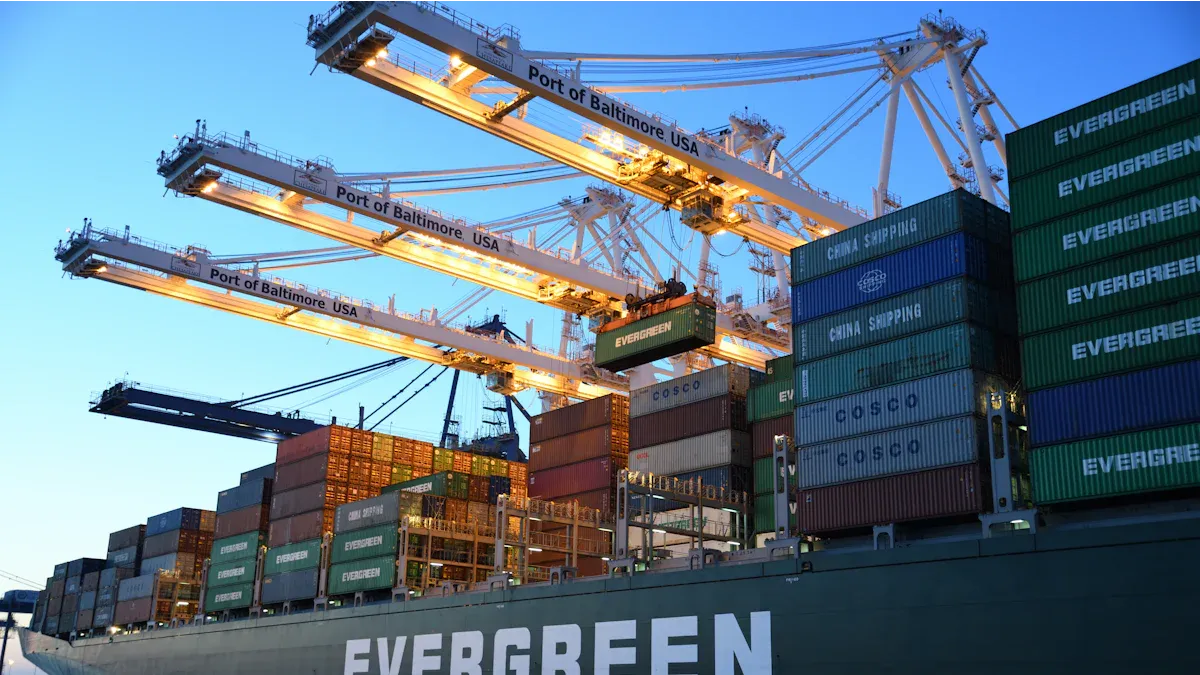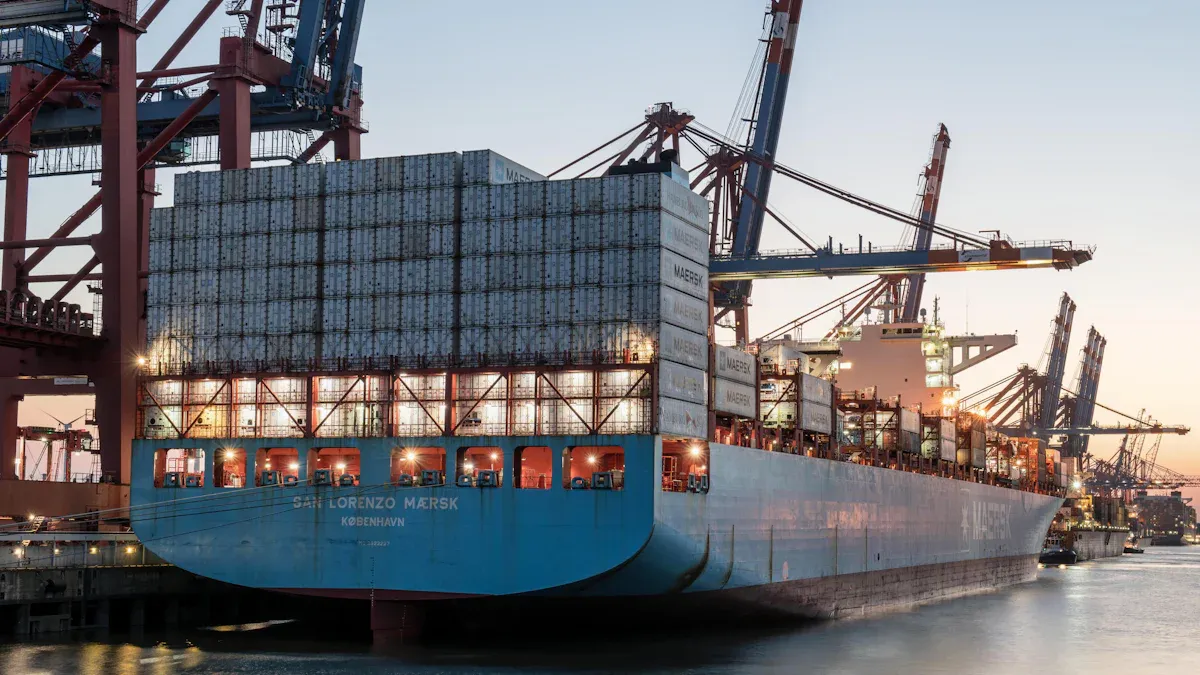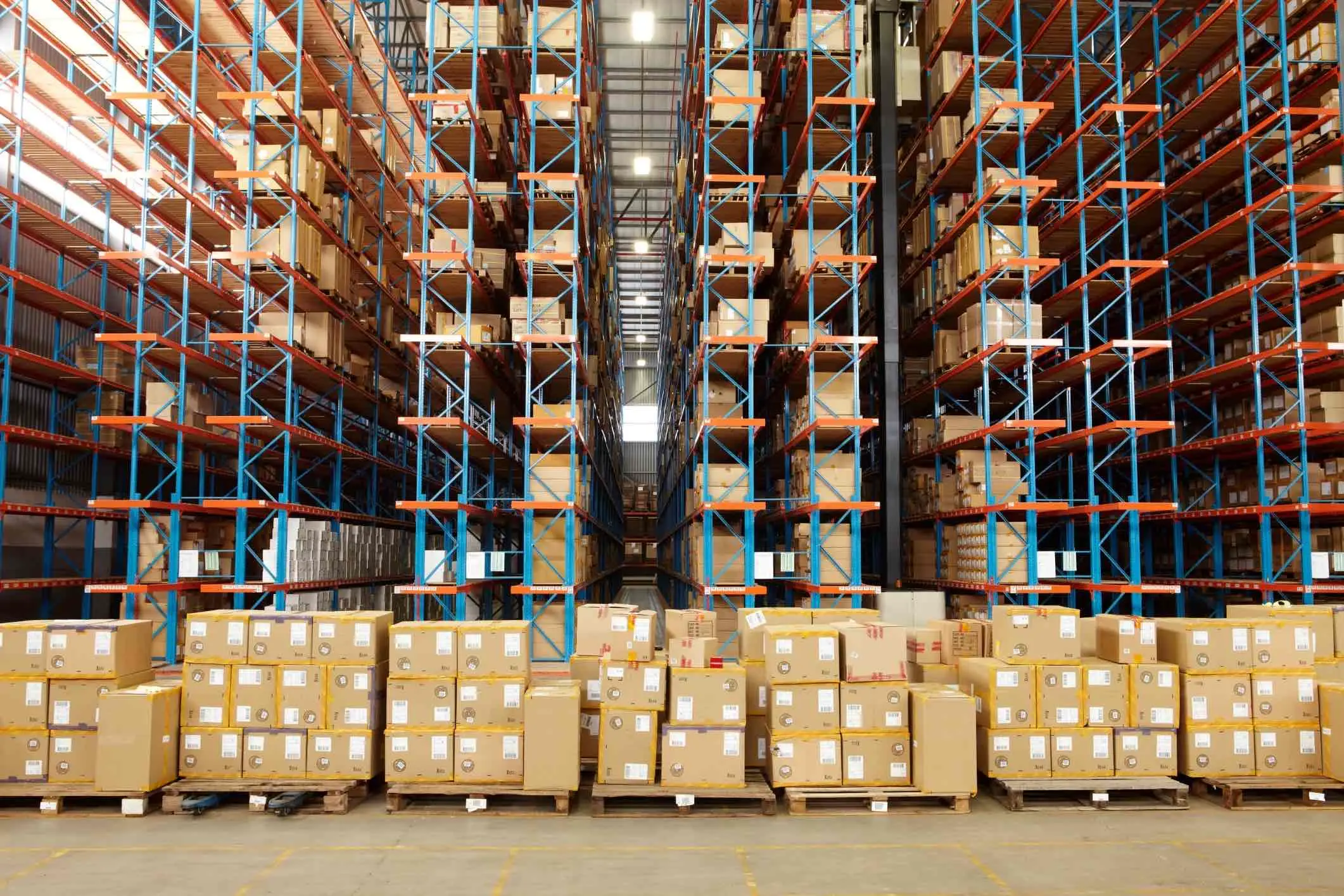Understanding the Complexities of Third-Party Logistics in 2025

The logistics industry is evolving rapidly, and Third-Party Logistics (TPL) providers play a crucial role in this transformation. With growing demand for faster deliveries, sometimes within mere hours, TPL providers are adopting advanced technologies to meet these expectations. Simultaneously, environmental concerns are becoming more prominent, with half of consumers favoring eco-friendly options. These shifts highlight the need for TPL providers to remain innovative and adaptable.
Key Takeaways
Technology is very important for 3PL companies. Using better tools helps deliveries go faster and makes customers happy.
Being eco-friendly matters a lot. Green practices help the planet and bring in more customers.
Teaching workers is very important. Giving them training builds a strong team for future problems.
Emerging Challenges in Third-Party Logistics (3PL) in 2025

The Impact of Technological Advances on 3PL Providers
Technology is changing how 3PL providers work. It brings both chances and problems. Customers now want faster deliveries and live tracking of their orders. To keep up, 3PL companies need better tools and systems. For example:
Companies delivering in under 30 minutes grow profits 1.67 times faster.
Over 87% of logistics companies have spent more on technology since 2020, and 93% plan to keep spending more.
These numbers show how important technology is to stay ahead. But adding new systems can be hard, especially with global data to manage. Smaller companies may also struggle with the high costs of upgrades.
Navigating Regulatory Changes and Compliance
Rules in logistics keep changing. Companies must follow environmental laws, customs rules, and local policies. Many are switching to electric vehicles and cleaner fuels to meet emission rules. Smart software helps track these changes and manage paperwork.
Key Area | Description |
|---|---|
Environmental Standards | Using green transport to cut pollution. |
Policy Monitoring | Updating rules to match new laws. |
Technology for Compliance | Using tools to avoid breaking rules. |
Partnerships | Working with trusted partners to follow laws. |
Following rules avoids fines and builds customer trust.
Addressing Environmental and Sustainability Pressures
Sustainability is now a big focus in 3PL logistics. Using green strategies helps both the planet and businesses. Studies show green logistics saves energy and lowers harm to communities. Environmental pressures also affect how well companies perform. So, 3PL providers must adapt.
By going green, companies meet customer needs and help the planet. This also makes them stronger in the global market.
Managing Supply Chain Disruptions and Geopolitical Risks
Supply chains face more problems now due to global issues like politics, weather, and cyberattacks. In 2021, U.S. companies lost $228 million on average from these problems. Companies also deal with material shortages and labor law issues.
To handle these risks, companies need flexible plans and real-time tracking. Digital tools can help spot problems and fix them fast.
Overcoming Labor Shortages and Workforce Challenges
Finding workers is still a big problem for 3PL companies. Almost half of logistics companies struggle to hire and keep workers. Training and teaching new skills can help solve this.
Using robots and machines can also lower the need for workers. By focusing on workers and technology, companies can stay ready for the future.
Key Strategies for 3PL Providers to Overcome Challenges
Using Advanced Technologies to Work Better
Using new technology can make work faster and easier. Tools like smart route planning help drivers deliver more packages quickly. This saves money and makes customers happy. Fixing vehicles before they break keeps them running longer. Tracking deliveries in real-time builds trust with customers. Managing inventory well stops items from running out.
Benefit Type | Description |
|---|---|
Smart Route Planning | Helps drivers deliver faster and save money. |
Fixing Vehicles Early | Spots problems to avoid costly breakdowns. |
Real-Time Tracking | Makes deliveries more reliable for customers. |
Inventory Management | Keeps shelves stocked and avoids shortages. |
These tools help companies work better and keep customers happy.
Making Supply Chains Clear and Easy to Track
Seeing the whole supply chain is very important. Tools like IoT and blockchain give live updates and make tracking easier. For example:
IoT devices watch shipments and find problems early.
Blockchain keeps records safe and builds trust.
Digital twins show how things work to improve decisions.
These tools make supply chains stronger and meet customer needs for clear information.
Building Strong and Flexible 3PL Systems
Being strong and flexible helps handle big problems. You can check strength by looking at delivery times and stock accuracy. Flexibility means changing quickly when needed.
Numbers like shipping costs and customer reviews show how well you are doing. Good communication and quick updates also help you stay flexible.
By focusing here, you can handle problems and stay efficient.
Training Workers for Future Logistics
Teaching workers new skills makes them better at their jobs. Over 93% of workers say training helps them do better. Training helps workers solve problems and work smarter.
Using machines can also lower the need for extra workers. Skilled workers and smart tools keep companies ready for the future.
Working Together for Green Logistics
Being eco-friendly is now a must in logistics. Working with others to use green ideas helps the planet and your business. Electric trucks, clean energy, and green packaging cut pollution and attract eco-friendly buyers.
By going green, you follow rules and grow stronger in the global market.
Future Trends Shaping Third-Party Logistics (TPL)

Artificial Intelligence (AI) Transforming 3PL Operations
AI is changing how 3PL companies work. It makes tasks smarter and faster. AI can guess demand, plan better routes, and fix mistakes. For example, AI reduces supply chain errors by 50%. It also lowers inventory by 35%, saving money and improving service by 65%.
Metric | Value |
|---|---|
Projected market size by 2031 | |
CAGR from 2024 | 40.4% |
Cost reduction | 15% |
Decrease in inventory levels | 35% |
Increase in service levels | 65% |
AI tools help study data quickly for faster decisions. With AI, companies can solve problems like delays and inefficiency.
Internet of Things (IoT) for Real-Time Supply Chain Tracking
IoT makes tracking shipments easier and faster. Sensors and GPS trackers show where goods are at all times. This helps you know the location and condition of items.
A Statista report says 45% of companies use IoT for tracking.
IoT also helps fix delivery problems quickly. It improves visibility, reduces losses, and makes supply chains more flexible.
Automation and Robotics in Warehousing and Distribution
Robots are changing how warehouses work. They do simple tasks like sorting and packing. This reduces the need for workers. In early 2021, companies bought nearly 10,000 robots worth $485 million.
Statistic Description | Value |
|---|---|
Robot orders in Q1 2021 | 9,972 robots |
Value of robot orders in Q1 2021 | $485 million |
Increase in robot orders from Q1 2020 | 19.6% |
Average savings in operational costs | 30% within the first year |
Using robots cuts costs by 30% and makes warehouses more efficient.
Blockchain for Secure and Transparent Logistics Transactions
Blockchain keeps logistics records safe and clear. It tracks every step in the supply chain without errors. Companies like Maersk and FedEx use blockchain to improve tracking and speed up work.
Company | Use of Blockchain | Benefits |
|---|---|---|
Maersk | Real-time visibility and data sharing | Better tracking and less fraud |
FedEx | Smart contracts for process automation | Faster deliveries and less paperwork |
Blockchain builds trust and reduces fraud while saving time on paperwork.
The Rise of Green Logistics and Carbon-Neutral Practices
Green logistics is now very important. Using electric trucks and better routes cuts pollution. Studies show green practices help both the planet and businesses.
Study Title | Key Findings |
|---|---|
Driving net zero emissions through green finance, green logistics, and corporate social responsibility | Green logistics lowers emissions and improves resource use. |
By going green, companies meet customer needs and follow environmental rules. This also makes them stronger in the market.
Case Studies: How JUSDA Solves 3PL Problems
JUSDA Uses AI to Improve Delivery Routes
JUSDA makes deliveries faster with AI-powered route planning. This saves time, fuel, and improves delivery accuracy. AI studies traffic, weather, and schedules to find the best routes. Deliveries are up to 40% quicker, and fuel use drops by 30%.
Metric | Improvement Range |
|---|---|
Delivery Times | 15-40% faster |
Fuel Consumption | 30% less |
Fleet Utilization | 15-25% better |
Maintenance Costs | 20-35% lower |
These changes make fleets more efficient and cut costs. Operations become greener and cheaper.
JUSDA Tracks Inventory in Real-Time
JUSDA’s tools help track inventory instantly. You can see stock levels and avoid running out. Tools like JusLink and eVMI predict shortages and plan restocking. With 2.5 million square meters of warehouse space, JUSDA supports industries like electronics and cars. These tools reduce mistakes and improve customer service.
JUSDA Leads in Green Logistics
JUSDA uses eco-friendly methods to cut pollution. Electric trucks, clean energy, and green packaging lower their carbon footprint. These actions follow global trends and meet environmental rules. By going green, JUSDA helps the planet and boosts your brand image.
JUSDA Trains Workers for the Future
JUSDA teaches workers new skills to handle labor shortages. Training covers AI, IoT, and automation. This keeps workers ready for changes in logistics. Skilled teams and smart tools make JUSDA flexible and future-ready.

JUSDA Solutions
To provide you with professional solutions and quotations.
In 2025, logistics faces issues like fewer workers, supply chain problems, and eco-friendly demands. Using smart tools and teamwork helps solve these challenges. JUSDA is leading with over 10% growth and new ideas like IoT and green methods, especially in Asia-Pacific.
Aspect | Details |
|---|---|
Market Growth Rate | Growth expected to be over 10% in five years |
Key Drivers | More people shopping online and buying groceries digitally |
Impact of Technology | Better tracking tools and IoT improving work speed |
Sustainability Trends | Focus on green transport and saving energy |
Geographic Focus | Asia-Pacific growing fast due to more cities |
See Also
Transforming Logistics: Embracing Digital Innovations for Tomorrow
The Impact of AI on Future Supply Chain Management
Exploring Technological Advances Shaping Future Logistics Today
Achieving Success in High-Tech Manufacturing Through Lean Logistics
